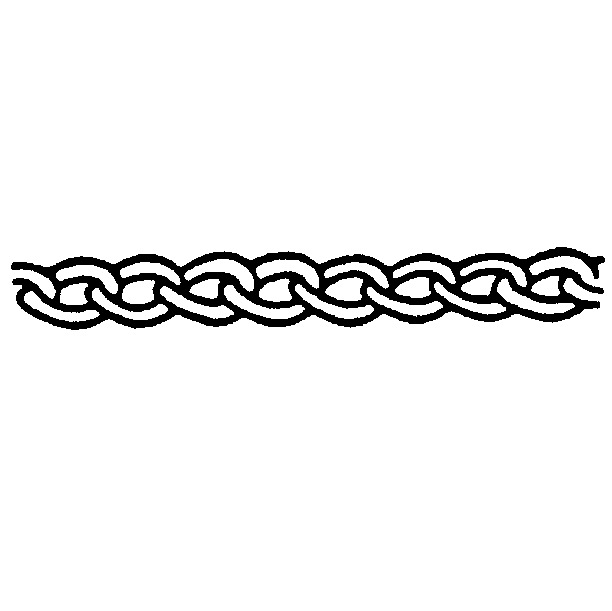When conditions dictate that tire chains must be used, most
current vehicles require SAE Class S or SAE Class U tire chains.

There are three different types of tire chains that can be used with
this chassis. The first type is the 1100 Series, Type PL.

The second type is the 1200 Series, Type P.

The third type of tire chain is the 1800 Series Lug-Reinforced. These
chains are specifically designed to limit the "fly-off" effect
that occurs when the wheel rotates.
Manufacturer's of tire chains have a specific chain size for each tire
size to ensure proper fit when installed. Therefore, the correct chains must
be purchased for the tires on which they are to be used. Rubber adjusters
should not be used to take up the slack or clearance in chains that are loose
due to incorrect size. Always follow the chain manufacturer's installation
instructions.
The use of a chain may affect handling. When using chains, follow these
guidelines.
| • | The vehicle must be designed with chain clearance. |
| • | Adjust the speed to road conditions. |
| • | Avoid locked-wheel braking to help prevent chain damage to the
vehicle, the vehicle's tires and the road surface. |
| • | Install the chains on the drive tires as tightly as possible.
Then tighten them again after driving 0.4 to 0.8 km (1/4 to 1/2 mile). |
| | NOTICE: The use of chains on non-drive tires is not recommended. The
chains may contact and possibly damage the vehicle. If chains are used on
non-drive tires, there must be enough clearance. |
| • | Do not exceed 70 km/h (45 mph) or the chain manufacturer's speed
limit, whichever is slower. |
| • | Drive in a restrained manner and avoid large bumps, potholes,
severe turns and other maneuvers which could cause the tires to bounce up
and down. |
| • | Follow any other instructions of the chain manufacturer which
do not agree with the instructions listed above. |



